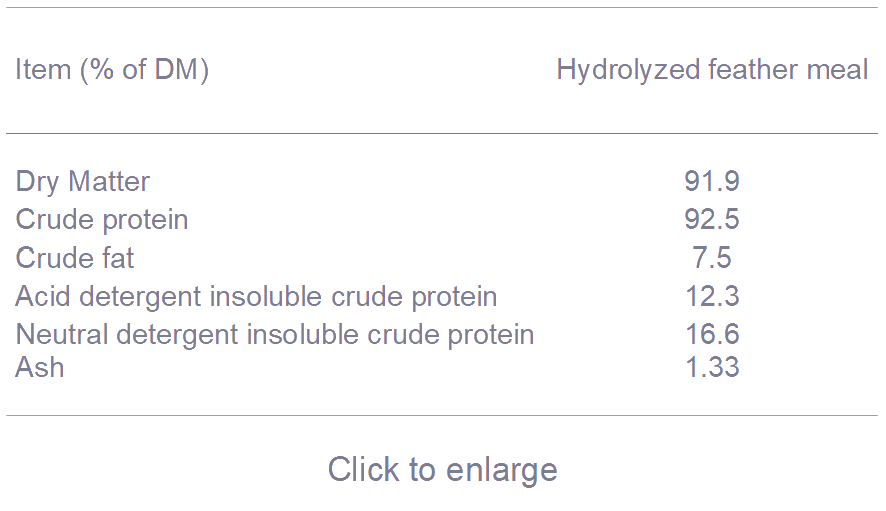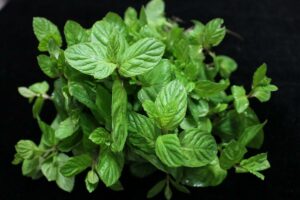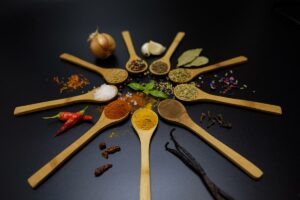Alvaro Garcia
Feedstuffs that contribute protein and energy for ruminants are costly all over the world. As a result, feeding usually constitutes the greatest individual cost constituting more than 50% of the cost of production in confined lactating dairy cows. Including byproducts form various industries into the diets is usually an economic alternative to reduce these costs. It also allows for reutilization of “waste” products, increasing the efficiency of production of human food. One example is hydrolyzed feather meal produced by cooking feathers under pressure.
Once dried, their protein content at close to 85%, rivals that of blood meal. It also supplies bypass protein and is rich in sulfur amino acids, usually limiting in dairy cow diets. In addition, hydrolyzed feather meal is rich in crude fat varying from 6 to 14% of the dry matter (DM), which increases its dietary energy content. As if these intrinsic properties were not enough, this basic technology can easily be applied in small family farms by simply using an old pressure cooker.
Advantages of feeding feather meal to dairy cows
A recent experiment (Morris et al., 2020) evaluated adding hydrolyzed feather meal to lactating dairy cattle diets to test the effects on total-tract protein digestibility and energy utilization. The design of this experiment was a triplicated 4 × 4 Latin square with 35-day periods (28-day adaption and 4-day collections) comparing 4 different dietary treatments:
- 0% of hydrolyzed feather meal (control)
- 3.3% of hydrolyzed feather meal (3.3FM)
- 6.7% of hydrolyzed feather meal (6.7FM)
- 10.0% of hydrolyzed feather meal(10FM)
Hydrolyzed feather meal replaced blood meal and nonenzymatically browned soybean meal.

As hydrolyzed feather meal (FM) increased in the diets so did net energy for lactation (NEL; 1.61, 1.64, 1.69, and 1.70 Mcal/kg of DM for control, 3.3FM, 6.7FM, and 10FM, respectively). The efficiency of converting metabolizable energy to NEL also increased (0.708, 0.711, 0.717, and 0.719, respectively for the four treatments).
The apparent total-tract digestibility of crude protein decreased linearly as FM increased in the diets (63.4, 61.1, 59.9, and 58.6% for control, 3.3FM, 6.7FM, and 10FM, respectively). The digestibility of the long-chain fatty acid increased as FM increased in the diets (77.2, 77.7, 78.5, and 80.6 ± 1.30%).
The increased bypass protein in the diets resulted in changes in the routes of nitrogen excretion. As FM increased in the diets, fecal N excretion also increased (199, 230, 239, 237 ± 12.1 g/day for control, 3.3FM, 6.7FM, and 10FM, respectively). Urinary N excretion however decreased as FM increased in the diets (166, 151, 155, and 119 ± 14.8 g/day).
Dry matter intake and milk yield were affected quadratically; it increased initially, then plateaued, and finally decreased. Dry matter intake was 19.6, 20.2, 20.3, and 19.1 ± 0.79 kg/day for control, 3.3FM, 6.7FM, and 10FM, respectively; while milk yield was 31.7, 32.0, 31.9, and 29.7 kg/day. With regards to milk components, increasing FM decreased milk protein concentration (3.34, 3.29, 3.23, and 3.23% for control, 3.3FM, 6.7FM, and 10FM, respectively) and yield (1.05, 1.05, 1.02, and 0.96 kg/day). Energy-correct milk yield was not affected by the inclusion of FM (average of 39.3 kg/day).
The limit for hydrolyzed feather meal is 6-7% of the diet dry matter
This experiment suggests that hydrolyzed feather meals in the diet of lactating dairy cows can replace blood meal and nonenzymatically browned soybean meal, and even result in higher dietary energy and efficiency of utilizing energy for milk production. It is apparent however that there is a limit to how much can be included at 6-7% of the diet dry matter, before negative effects on milk protein concentration and yield show-up.
Reference
Morris, D.L., Judy, J.V., Kononoff, P.J. 2020. Use of indirect calorimetry to evaluate utilization of energy in lactating Jersey dairy cattle consuming diets with increasing inclusion of hydrolyzed feather meal. Journal of Dairy Science. 103:4206–4217.
© 2020 Dairy Knowledge Center. All Rights Reserved.











